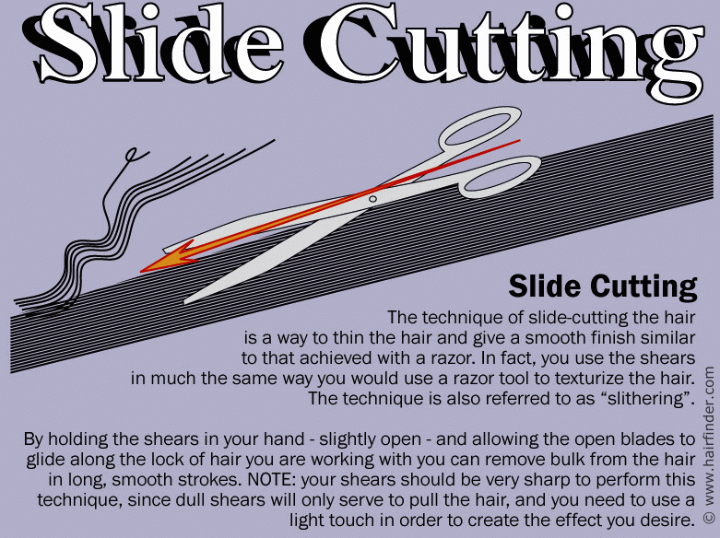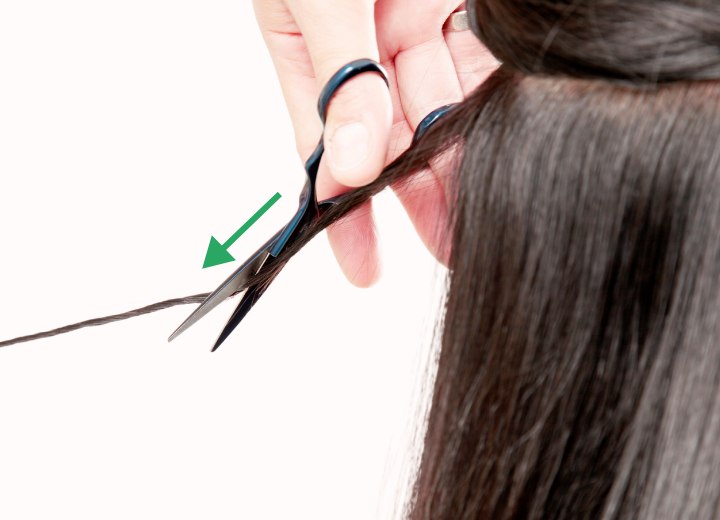Slide Cutting

Q: What is slide cutting?
A: Slide cutting is a hair texturing technique that involves gliding your shears along the hair shaft while holding them in a slightly open position. This method, also known as slithering or effilage, allows hairstylists to remove bulk and create texture without the harsh lines that can result from traditional cutting methods.
What makes slide cutting particularly valuable is its ability to create a natural, seamless blend while reducing weight and bulk. Unlike point cutting or other texturing methods that can sometimes create choppy or uneven results, slide cutting produces a smooth, graduated effect that flows naturally with the hair's movement.
Mastering slide cutting requires patience, practice, and a steady hand. The most critical aspect is maintaining consistent finger positioning throughout the entire cutting motion. Your grip on both the hair section and the shears must remain steady, as any inadvertent movement can cause the shears to close unexpectedly and remove a large chunk of hair.
Before attempting this technique on clients, it's essential to practice extensively on a mannequin head. This allows you to develop the proper muscle memory and get comfortable with the sliding motion without the pressure of working on a real person. Start with small sections and light pressure until you build confidence in the technique.

Slide cutting is most effective on long, coarse, and straight-to-wavy hair textures. These hair types tend to hold their shape well and respond beautifully to the gradual weight removal that slide cutting provides. Coarse hair, in particular, benefits from this technique because it often appears heavy or triangular when cut with traditional methods, and slide cutting helps create a more balanced silhouette.
Straight hair is ideal for slide cutting because the technique can add movement and reduce the blunt, heavy appearance that straight hair often has when cut conventionally. The sliding motion creates subtle layers and texture that give straight hair more body and interest.
Wavy hair also responds well to slide cutting, as the technique can help reduce bulk while maintaining the hair's natural wave pattern. This is useful for clients with thick, wavy hair that tends to become pyramid-shaped or lose its wave definition due to excessive weight.
Curly hair presents unique challenges that make slide cutting less suitable and even problematic. The natural bends and curves in curly hair can cause the shears to catch unexpectedly during the sliding motion, leading to uneven cutting and unwanted gaps in the hair.
©Hairfinder.com
See also:
Notching and point cutting
How to thin out hair without thinning shears